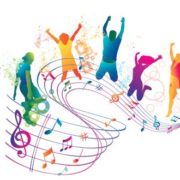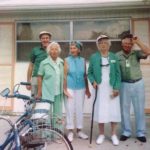Music Therapy
by Karla Mramor, MT-BC
Why don’t you come and play for our happy hour?” Mrs. Light* asked when I phoned to schedule a music therapy visit for her husband, an Avow Hospice patient. As a music therapist working in the hospice field for nearly 20 years, I’ve often faced misconceptions about my profession. So, I respectfully asked, “Would you be open to a more personal experience, one that would reconnect your family with music you’ve found meaningful over the years?” Without pause, Mrs. Light invited me to meet her family the next morning. I knew that she and her husband would be amazed by the tremendous benefits of music therapy – once they understood it
Music therapy is an established healthcare profession, grounded in research, with a well-defined scope of practice. Music interventions (e.g. creating, singing, moving to and listening to music) address the unique needs of each individual. As part of an Avow Hospice patient’s plan of care, therapists use music to alleviate pain, to calm fear or anxiety, to elevate mood and counteract depression, facilitate self-expression and life review, and provide support to patients and families during the end of life process, contributing to the goal of a peaceful transition.
To practice music therapy, one must have a minimum of a bachelor’s degree from one of 72 colleges/universities approved by the American Music Therapy Association, including 1200 hours of clinical training. In addition to extensive musical training, music therapy degrees require knowledge in psychology and counseling, human anatomy and medicine. Music therapists must hold the MT-BC credential (music therapist – board certified) following successful passage of the initial certification exam. Credentials are renewed every five years upon completion of approved continuing education.
When I arrived at Mr. Light’s home, his daughter (one of five adult children) introduced me to Mr. Light, who was seated in his living room recliner, covered with a blanket. He was obviously quite frail, weak and fatigued. Every word he spoke seemed to require Music therapy by Karla Mramor, MT-BC herculean effort. His eyes widened with interest, however, as I setup my Yamaha keyboard. From the kitchen came the soft, lovely vocal strains of another daughter, singing “The hills are alive, with the sound of music.” As she sang, I began accompanying her from the keyboard. She stepped into the living room to join us, singing full voice now. Next she asked if I knew the song, “My Favorite Things:” I said yes and we quickly transitioned into its lilting waltz beat. Mr. Light grinned from ear to ear as she sang and danced.
One by one each of her siblings joined the session, calling out songs each recalled from their childhood, when music served as a binding thread in the tapestry of their family experiences. In between songs there were reminiscences of important events in their lives, some that had been but distant memories until the music made them fresh once more. At the request of his son and with support from all, Mr. Light sang a song from their childhood, bringing tears to the eyes of his loving children.
Mrs. Light had been listening from the kitchen while engaged in other tasks. The children encouraged her to join them, asking if she could remember the lyrics and motions to a particular song she used to sing with them. Once she began to sing and move, all joined the familiar chorus and motions. They laughed and regaled one another with a flood of happy memories. At the conclusion of the visit, Mrs. Light walked me to the door, hugged me tightly, and said, “Now I get it…this was not entertainment…this was music therapy for my entire family.” Yes! Yes, that’s exactly what it was.
Light* is a fictitious name and has no relevance to past or present patients. To learn more about the Music Therapy program at Avow call 239.261.4404




Leave a Reply
Want to join the discussion?Feel free to contribute!